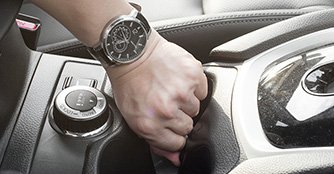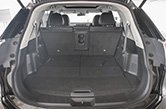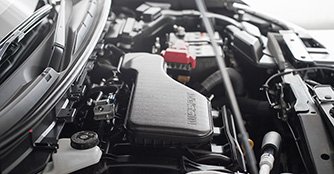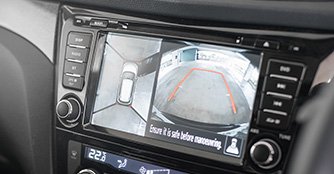Nissan X-Trail 2.0 Premium 7-seater (A) Review
19 Dec 2014|57,855 views
There are certain friends you remember forever. If you've lost contact with such a friend over the years, it doesn't mean you can't reconnect. The Nissan X-Trail is one such example.
We first met in 2001 and eight years later, it sort of drifted out of the local industry. Last year, we came across its photos at the 2013 Frankfurt Motor Show and this year, we bumped into it outside the Nissan showroom - looking like nothing before.
Nissan has diverted the old X-Trail down the family-friendly path with a stylish new body that cloaks a bigger and more flexible cabin with a seven-seat configuration, allowing the X-Trail to effectively replace the Qashqai+2.
The third generation soft-roader is based on the jointly-developed Nissan/Renault Common Module Family (CMF) platform architecture, which also underpins the Juke, the Qashqai and the Murano.
Exterior
It's no surprise then that there was some sense of deja vu when we recently got acquainted with the new Qashqai, a car that the new X-Trail takes many of its design cues from.
 |
Starting from the X-Trail's nose, it's easy to see the influence of the Qashqai. This said nose features Nissan's new family grille and is part of a stylish front fascia with powerful bonnet creases. Likewise, the rear is now very sophisticated with high-mounted, modern, jewel-like taillights and an integrated tailgate spoiler.
In stark contrast to its boxy-looking predecessor, the updated exterior styling of the X-Trail boasts a softer, more European feel that is likely to appeal more to the city driver.
At the same time, the X-Trail has grown. It is now 185mm longer, 55mm wider and 40mm taller than before and it also offers 80mm of extra length in the wheelbase, which translates into more interior space.
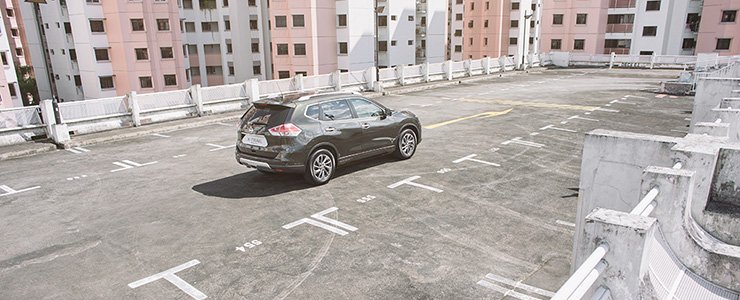 |
Interior
Indeed, the X-Trail's cabin space is likely to win fans. Massive amounts of leg and shoulder room make the X-Trail's second row feel dimensionally large, and while the theatre seating layout allows passengers to get a good view out in front, it doesn't come at the expense of headroom.
Although the X-Trail is a seven-seater, the two rear seats are capacious enough for only small children and they are better off folded down so that the 445-litre boot can help see to the luggage and grocery bags.
Owners of the old X-Trail won't recognise the new one from the inside as the cabin itself is a significant improvement over the utilitarian fit-out in the old model, with plenty of quality soft-touch surfaces and brushed metallic accents, as well as an ergonomically sound layout.
The overall effect is an interior that looks and feels decidedly more premium with a new steering wheel, instrument cluster (including a useful LCD colour display) and a liberal spread of piano black plastics that complete the makeover.
As with many recent cars in Nissan's stable, the X-Trail's 'zero-gravity' inspired front seats are well-cushioned and wonderfully comfortable, making long journeys a real pleasure.
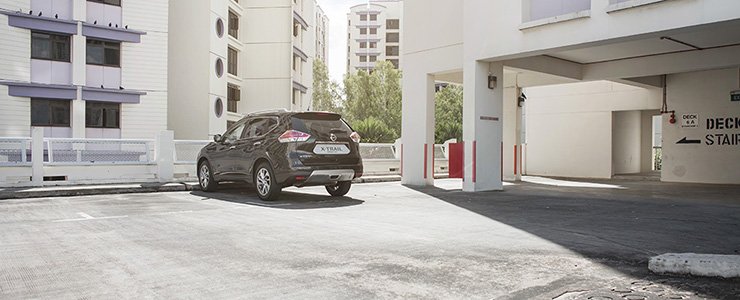 |
The Drive
Under the bonnet, the new X-Trail shares the same drivetrain as the Qashqai. From our previous experience, this drivetrain is one that's not to be rushed. When driven sedately, it offers a level of refinement you would expect in a larger premium car.
The Xtronic CVT gearbox is also quick enough in harnessing power from the 2.0-litre engine. Thanks to its stepped ratios, the engine is kept right in the meat of the torque band.
Nissan has also succeeded in making the X-Trail a comfortable car, soaking up bumps and lumps along the way. Unfortunately, the excellent ride quality comes at a slight expense of handling as the X-Trail isn't a car that likes to be driven hard around corners.
However, around town, on the highway and at more sedate speeds, this car has impressive road manners and is very relaxing and easy to get along with.
We didn't get to put Nissan's ALL MODE 4x4-I system through its paces off-road during our test drive but torrential downpours and flooded roads allowed the X-Trail's 210mm ground clearance to get us through one of the 'ponds' safely.
That's the thing with soft-roaders in the family environment - versatility. Whether it's flooded roads or a full load of people and cargo, cars like the X-Trail have what it takes to do 'stuff' that will otherwise challenge regular sedans and wagons.
Conclusion
Much of the appeal of the X-Trail lies in the fact that it's a very sensible car that offers more practicality than the Qashqai without costing much more (a difference of $12,000 as of 18th December 2014).
So here we have a new X-Trail that is more handsome, bigger, better equipped and nicer to drive than before. Perhaps that's what it means when they say long lost friends are like old wine, they get better with age.
There are certain friends you remember forever. If you've lost contact with such a friend over the years, it doesn't mean you can't reconnect. The Nissan X-Trail is one such example.
We first met in 2001 and eight years later, it sort of drifted out of the local industry. Last year, we came across its photos at the 2013 Frankfurt Motor Show and this year, we bumped into it outside the Nissan showroom - looking like nothing before.
Nissan has diverted the old X-Trail down the family-friendly path with a stylish new body that cloaks a bigger and more flexible cabin with a seven-seat configuration, allowing the X-Trail to effectively replace the Qashqai+2.
The third generation soft-roader is based on the jointly-developed Nissan/Renault Common Module Family (CMF) platform architecture, which also underpins the Juke, the Qashqai and the Murano.
Exterior
It's no surprise then that there was some sense of deja vu when we recently got acquainted with the new Qashqai, a car that the new X-Trail takes many of its design cues from.
Starting from the X-Trail's nose, it's easy to see the influence of the Qashqai. This said nose features Nissan's new family grille and is part of a stylish front fascia with powerful bonnet creases. Likewise, the rear is now very sophisticated with high-mounted, modern, jewel-like taillights and an integrated tailgate spoiler.
In stark contrast to its boxy-looking predecessor, the updated exterior styling of the X-Trail boasts a softer, more European feel that is likely to appeal more to the city driver.
At the same time, the X-Trail has grown. It is now 185mm longer, 55mm wider and 40mm taller than before and it also offers 80mm of extra length in the wheelbase, which translates into more interior space.
Interior
Indeed, the X-Trail's cabin space is likely to win fans. Massive amounts of leg and shoulder room make the X-Trail's second row feel dimensionally large, and while the theatre seating layout allows passengers to get a good view out in front, it doesn't come at the expense of headroom.
Although the X-Trail is a seven-seater, the two rear seats are capacious enough for only small children and they are better off folded down so that the 445-litre boot can help see to the luggage and grocery bags.
Indeed, the X-Trail's cabin space is likely to win fans. Massive amounts of leg and shoulder room make the X-Trail's second row feel dimensionally large, and while the theatre seating layout allows passengers to get a good view out in front, it doesn't come at the expense of headroom.
Although the X-Trail is a seven-seater, the two rear seats are capacious enough for only small children and they are better off folded down so that the 445-litre boot can help see to the luggage and grocery bags.
Owners of the old X-Trail won't recognise the new one from the inside as the cabin itself is a significant improvement over the utilitarian fit-out in the old model, with plenty of quality soft-touch surfaces and brushed metallic accents, as well as an ergonomically sound layout.
The overall effect is an interior that looks and feels decidedly more premium with a new steering wheel, instrument cluster (including a useful LCD colour display) and a liberal spread of piano black plastics that complete the makeover.
As with many recent cars in Nissan's stable, the X-Trail's 'zero-gravity' inspired front seats are well-cushioned and wonderfully comfortable, making long journeys a real pleasure.
The Drive
Under the bonnet, the new X-Trail shares the same drivetrain as the Qashqai. From our previous experience, this drivetrain is one that's not to be rushed. When driven sedately, it offers a level of refinement you would expect in a larger premium car.
The Xtronic CVT gearbox is also quick enough in harnessing power from the 2.0-litre engine. Thanks to its stepped ratios, the engine is kept right in the meat of the torque band.
Nissan has also succeeded in making the X-Trail a comfortable car, soaking up bumps and lumps along the way. Unfortunately, the excellent ride quality comes at a slight expense of handling as the X-Trail isn't a car that likes to be driven hard around corners.
However, around town, on the highway and at more sedate speeds, this car has impressive road manners and is very relaxing and easy to get along with.
Under the bonnet, the new X-Trail shares the same drivetrain as the Qashqai. From our previous experience, this drivetrain is one that's not to be rushed. When driven sedately, it offers a level of refinement you would expect in a larger premium car.
The Xtronic CVT gearbox is also quick enough in harnessing power from the 2.0-litre engine. Thanks to its stepped ratios, the engine is kept right in the meat of the torque band.
Nissan has also succeeded in making the X-Trail a comfortable car, soaking up bumps and lumps along the way. Unfortunately, the excellent ride quality comes at a slight expense of handling as the X-Trail isn't a car that likes to be driven hard around corners.
However, around town, on the highway and at more sedate speeds, this car has impressive road manners and is very relaxing and easy to get along with.
We didn't get to put Nissan's ALL MODE 4x4-I system through its paces off-road during our test drive but torrential downpours and flooded roads allowed the X-Trail's 210mm ground clearance to get us through one of the 'ponds' safely.
That's the thing with soft-roaders in the family environment - versatility. Whether it's flooded roads or a full load of people and cargo, cars like the X-Trail have what it takes to do 'stuff' that will otherwise challenge regular sedans and wagons.
Conclusion
Much of the appeal of the X-Trail lies in the fact that it's a very sensible car that offers more practicality than the Qashqai without costing much more (a difference of $12,000 as of 18th December 2014).
So here we have a new X-Trail that is more handsome, bigger, better equipped and nicer to drive than before. Perhaps that's what it means when they say long lost friends are like old wine, they get better with age.
Also read our comparison article on:
Nissan X-Trail 2.0 Premium 7-seater (A) vs Subaru Forester 2.0i-L (A)Car Information
Nissan X-Trail 2.0 Premium 7-Seater (A)
CAT B|Petrol|13.3km/L
Horsepower
106kW (142 bhp)
Torque
200 Nm
Acceleration
12.1sec (0-100km /hr)
This model is no longer being sold by local distributor
All Used Nissan X-TrailThank You For Your Subscription.































